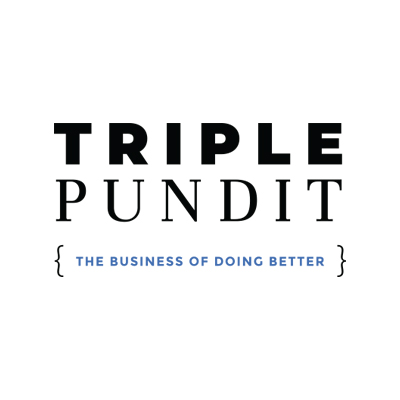
This post is part of Triple Pundit's ongoing coverage of the SXSW Eco conference. For the rest, please visit our SXSW Eco page here.
On the first day of SXSW Eco, design experts discussed examples of how creative design makes sustainability easy, cost-effective and beautiful. Moderated by Vince Digneo, sustainability strategist for Adobe Systems, panelists from Frog Design, Building Robotics and Levi Strauss & Co. showcased their innovative approaches to solving problems while making their products, services and consumer experiences better.
Denise Gershbein explained Frog Design’s position: They help their customers with global production design that is long-term and systems focused. She explains that cradle-to-cradle and visionary thinking is at the root of their design consultations, and these are the most important attributes that lead the non-linear design process towards solving complex sustainability problems.
In my view, the most interesting component of the panel was Paul Dillinger’s deep dive into the sustainability-driven design tactics he leads at Levi Strauss. He began with the recognition that the fashion industry has a notoriously bad reputation for being highly wasteful and unsustainable, from the mostly unrecyclable materials through the environment-intense chemicals. This is a result of an industry that is primarily concerned with trend relevancy and valuing consumer needs over the bigger picture of eco-consciousness. There is a trend in 'eco-fashion' labels, but he notes that the design and marketing approaches they utilize often only address one issue of a very large and complex system, like focusing solely on the use of organic cotton.
He attributed this shortcoming in the fashion industry to the consideration of environmental constraints as barriers to creativity and freedom of design. But in fact, Dillinger, the company's head of global production innovation, said he uses these as springboards for innovation and sustainability. He feels that the process of unlocking environmental and social qualities that can be built into pieces of clothing is actually more creatively rewarding, and he has seen firsthand how these attributes can create more business and consumer benefits.
Traditionally, a pair of jeans uses 4,000+ liters of water throughout its lifecycle. In the production phase, a large portion of this water usage comes from the dying process, which is comprised of about 18 dye-dipping cycles. To cut back, Dillinger shared that his company has developed a nearly waterless method for dying denim that instead utilizes pressure, which has resulted in 50 to 75 percent water savings. Outside of production, 45 percent of the water usage for a pair of jeans happens after they leave the store and are in the consumer’s hands. Most companies are not necessarily invested in what happens outside the realm of their factories. However, Levi’s has addressed this issue as well, by instructing consumers to wash with cold water and to line-dry their jeans and shirts.
He then posed a question to the room: Have any of you tried to dry a shirt on a hanger with satisfaction? The reality is: Wire hangers leave those undesirable stretch marks on the shoulders. To make their customers’ experience better, Levi's reinforces that area on their shirts so they can better withstand air-drying. This clever design trick not only saves energy and water, but is also a great example of how creative design can be more sustainable and consumer-friendly. The two do not need to be mutually exclusive.
In addition to water use, Dillinger gave yet another example of how inserting sustainability values at every step of the creative design and production process can have outstanding benefits: He explained that most clothes are unrecyclable because of the use of polyester thread and tags. Polyester is more durable and can withstand the use of additional dying and finishing chemicals, like the ones used to give jeans vintage looks. He knew the company wanted to shift to cotton, but that would then require a new method of finishing. Through creative experimentation, the company was able to start using a finishing method that utilizes light and lasers. This example stresses the need to think in a systematic and holistic way to solve problems relating to the sustainability of their brand and products.
By purposively inserting environmental and sustainability values into their product design, Levis Strauss & Co. is able to make clothes that are identical to what they have produced in the past -- but now with more inherent values that give them a competitive edge. By factoring in additional social considerations, like adopting fair labor policies and reinvesting in the communities where its factories are located, the company is now better apt than ever to control the unintended consequences and externalities of its business.
Image credit: Rebecca Hedges Lyon (courtesy of SXSW Eco)

TriplePundit editors offer news and insights on sustainable business.














